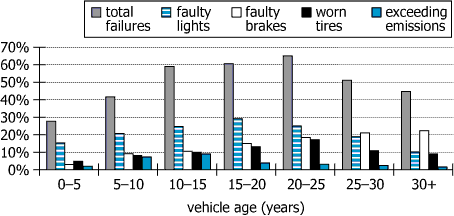Events & Promotions
|
|

GMAT Club Daily Prep
Thank you for using the timer - this advanced tool can estimate your performance and suggest more practice questions. We have subscribed you to Daily Prep Questions via email.
Customized
for You
Track
Your Progress
Practice
Pays
Not interested in getting valuable practice questions and articles delivered to your email? No problem, unsubscribe here.
- Nov 19
12:30 PM EST
-01:30 PM EST
Learn how Keshav, a Chartered Accountant, scored an impressive 705 on GMAT in just 30 days with GMATWhiz's expert guidance. In this video, he shares preparation tips and strategies that worked for him, including the mock, time management, and more - Nov 20
07:30 AM PST
-08:30 AM PST
Learn what truly sets the UC Riverside MBA apart and how it helps in your professional growth - Nov 20
01:30 PM EST
-02:30 PM IST
Learn how Kamakshi achieved a GMAT 675 with an impressive 96th %ile in Data Insights. Discover the unique methods and exam strategies that helped her excel in DI along with other sections for a balanced and high score. - Nov 22
11:00 AM IST
-01:00 PM IST
Do RC/MSR passages scare you? e-GMAT is conducting a masterclass to help you learn – Learn effective reading strategies Tackle difficult RC & MSR with confidence Excel in timed test environment - Nov 23
11:00 AM IST
-01:00 PM IST
Attend this free GMAT Algebra Webinar and learn how to master the most challenging Inequalities and Absolute Value problems with ease. - Nov 24
07:00 PM PST
-08:00 PM PST
Full-length FE mock with insightful analytics, weakness diagnosis, and video explanations! - Nov 25
10:00 AM EST
-11:00 AM EST
Prefer video-based learning? The Target Test Prep OnDemand course is a one-of-a-kind video masterclass featuring 400 hours of lecture-style teaching by Scott Woodbury-Stewart, founder of Target Test Prep and one of the most accomplished GMAT instructors.
Kudos
Bookmarks
Dropdown 1: 20-25
Dropdown 2: 25
Be sure to select an answer first to save it in the Error Log before revealing the correct answer (OA)!
Difficulty:
 25%
(medium)
25%
(medium)
Question Stats:
79% (01:31) correct 21%
(01:44)
wrong
21%
(01:44)
wrong  based on 1655
sessions
based on 1655
sessions
History
Date
Time
Result
Not Attempted Yet

The graph shows the percentage of vehicles that have failed routine inspections in a certain region in the past year, by vehicle age, as well as the percentage of those failures attributable to each of the following causes: faulty lights, faulty brakes, worn tires, and exceeding emissions.
Select from each drop-down menu the option that creates the most accurate statement based on the information provided.
The inspection failure rate was highest for vehicles that were years old, where approximately percent of vehicles of that age failed inspection due to faulty lights.

The graph shows the percentage of vehicles that have failed routine inspections in a certain region in the past year, by vehicle age, as well as the percentage of those failures attributable to each of the following causes: faulty lights, faulty brakes, worn tires, and exceeding emissions.
Select from each drop-down menu the option that creates the most accurate statement based on the information provided.
The inspection failure rate was highest for vehicles that were years old, where approximately percent of vehicles of that age failed inspection due to faulty lights.
ID: 700185
ShowHide Answer
Official Answer
Dropdown 1: 20-25
Dropdown 2: 25
Kudos
Bookmarks
Quote:
The inspection failure rate was highest for vehicles that were ___ years old, where approximately ___ percent of vehicles of that age failed inspection due to faulty lights.
The inspection failure rate is represented by the grey bars. It is the highest for 20 - 25 so we can say that inspection failure rate was highest for vehicles that were 20 - 25 years old.
In this group, what is the approximate % of vehicles of that age that had faulty lights? We see that 25% vehicles of that age had faulty lights (and hence failed inspection). So our answer is 25%.
ANSWER: 20 - 25 years, 25%
Note that it is NOT 25/65 i.e. about 40% (anyway that option is not available). More importantly, why? Because our base is 'vehicles of that age', not 'vehicles of that age that failed inspection.' Read the question again.
... "approximately ___ percent of vehicles of that age" failed inspection due to faulty lights?
Coldfire
General Discussion
Kudos
Bookmarks
Can anyone help explain this question please?The stem states that the small ''graph sticks'' are
thank you
Quote:
so the second part of the answer is a percentage of the failures themselves in our case it must be 25%(percentage of faulty light failures) of 65% (total failures) which gives us approximately 15%
thank you













